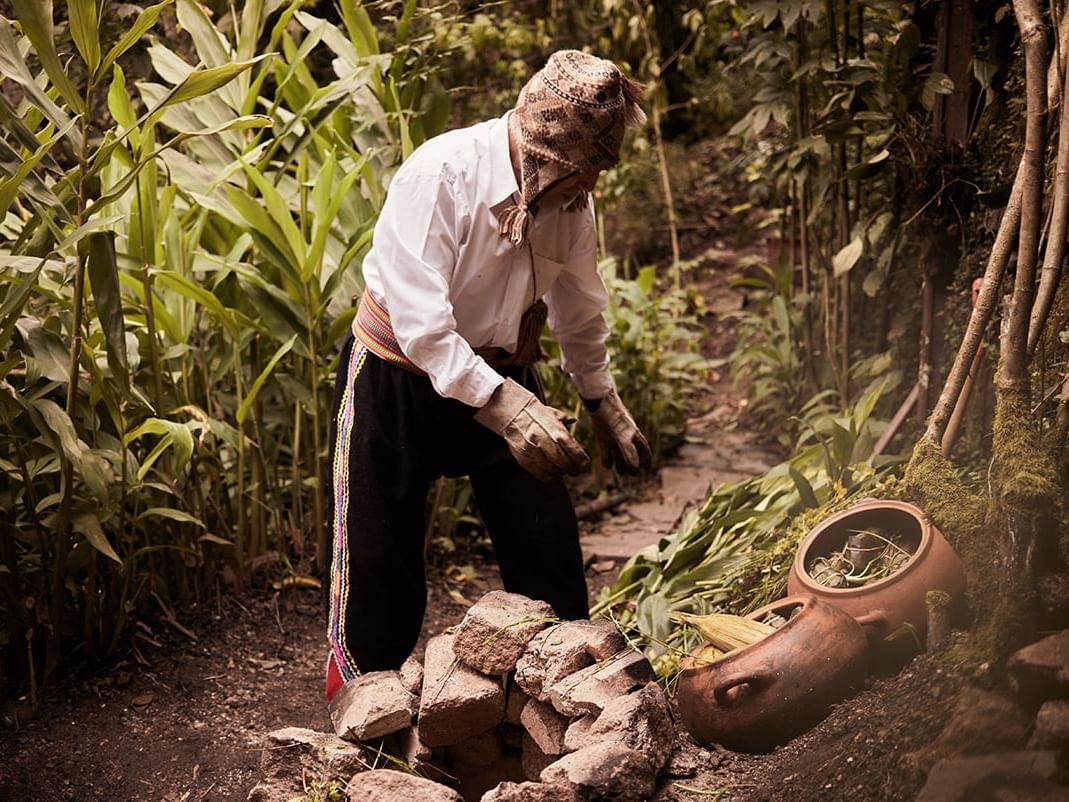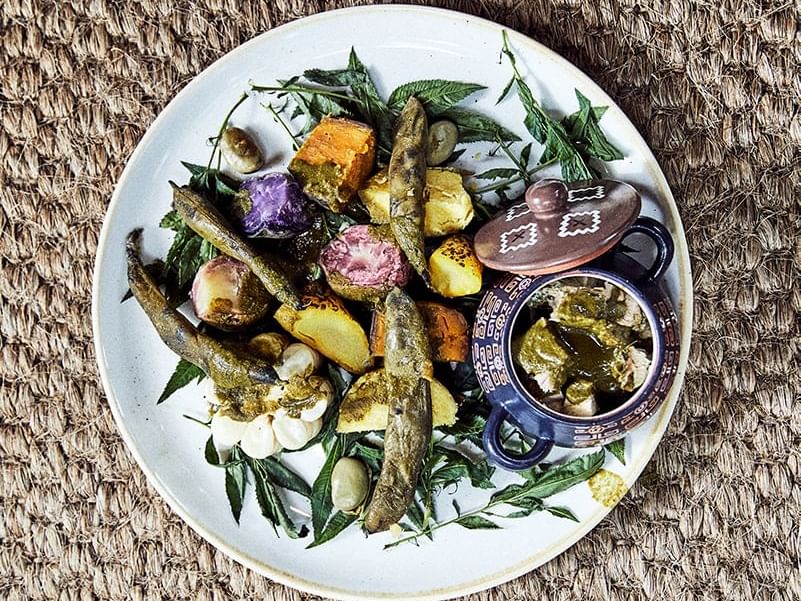Pachamanca, the nation’s cultural heritage.
Currently, Peru is a destination for gastronomic tourists due to its infinite variety of products of both animal and plant origin, as well as its extraordinary fusions. However, the most attractive and charming offerings in this culinary destination are the ancestral traditions that continue to this day.
Considered a National Cultural Heritage, the pachamanca, derived from the Quechua language: pacha-land and manka-pot, is the most representative millenary dish of the Incas that dazzles all the world. It is part of the inheritance from our ancestors and, to this day, is a ritual that is linked to family and celebration. The most emblematic aspect of this dish is its way of cooking the food: by contact with hot stones inside a hole dug in the ground. This ancestral rite symbolizes worship of the divinities of the Andean world. It is a rite of gratitude to Mother Earth after a good harvest, where one eats directly from within her the products that she offers.
When you witness this great ancestral culinary rite, you will notice that this hole underground is full of stones that have been previously heated with firewood or charcoal and selected with caution– not all are suitable for the task. Inside this stone oven, you will find vegetables such as potatoes, corn, fava beans, among others, as well as many seasoned meats, marinated a day in advance, and separated with special leaves. The traditions say that this is a male ritual: the earth is female and is very jealous, therefore, a woman should never dig the hole in the wet ground, rather, it is the task for men. In addition, the lid of the pachamanca must be a special mesh of interlaced herbs that will then be covered with jute sacks and earth until forming a mound that will be crowned with a cross and flowers.
This is why at Sumaq Machu Picchu Hotel we delight our guests with an authentic pachamanca with its processes and ingredients typical of the Andean tradition.
In this activity, participants will be able to witness the preparations of the dish; the placement of the stones that will serve as the underground stove; the cooking of ingredients such as potatoes, ocas, fava beans, aromatic herbs, and a variety of meats, all of which in the end are completely covered with large leaves and earth. Finally, when the table is served, the guests prepare to toast and salute the apus (spirits of the mountains) with chicha.
If you would like to participate in this activity, please do not hesitate to write to reservations@sumaqhotelperu.com to have everything prepared for you and your loved ones.

